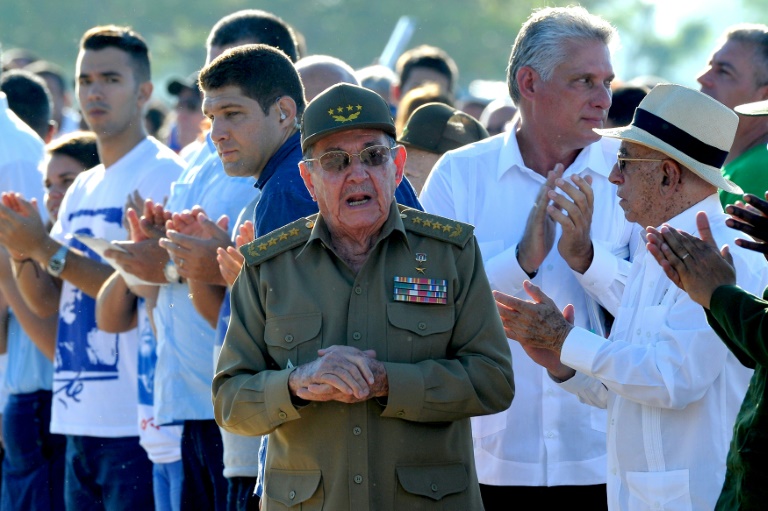Daily Lotto results: Friday, 18 April 2025
An estimated 70,000 people thronged the streets outside a mausoleum in this town 300 kilometers (186 miles) east of the capital Havana which houses the remains of Guevara and of some of his former comrades.
President Raul Castro, dressed in his general’s uniform, was among those attending the ceremony in Santa Clara, which was the site of a December 1958 battle that finally sent Cuban dictator Fulgencio Batista into exile.
Raul Castro fought alongside Guevara during the Cuban revolution led by his brother Fidel Castro.
The 39-year-old Guevara was captured and executed by a CIA-trained unit of the Bolivian army on October 9, 1967.
This year’s ceremony was the first in the absence of Fidel Castro, who died last year, and an excerpt from one of his speeches honoring Guevara was played for the crowd.
The anniversary comes amid the dying gasps of other Latin American guerrilla movements such as the FARC in Colombia, which last year reached a peace deal with the government and recently disarmed.
The 86-year-old Raul Castro took a back seat at Sunday’s ceremony to Miguel Diaz-Canel, who is expected to replace him as president next year.
– ‘Che is still here’ –
Diaz-Canel, 57, denounced American “imperialism” in a speech and referred to increased tension in Cuba-US relations since Donald Trump became president.
Cuba will “never negotiate away its principles or give in to blackmail,” he said.
Elena Gonzalez, a 56-year-old textile worker, was among those who turned up at the crack of dawn to pay her respects to Guevara.
“Yes, we got up very early but it’s worth it,” she said. “We’re keeping his example alive and his legacy of independence and sovereignty for Latin America and the world.”
“For me, Che is still here — his life, his work, his example,” said 79-year-old Luis Monteagudo, who fought alongside Guevara in the Congo and was wearing a white T-shirt with his picture.

Cuban President Raul Castro at a ceremony marking the 50th anniversary of the death of Ernesto “Che” Guevara
Che’s remains were transferred from Bolivia to Cuba in 1997 and interred in a mausoleum here which features a large bronze statue of the guerrilla leader.
Born in the Argentine city of Rosario, Guevara traveled across Latin America in 1952 and 1953 — a road trip that was immortalized in the 2004 film “The Motorcycle Diaries” — and was shocked to see the economic disparity in the region.
It convinced him that violence was necessary to overturn Latin America’s unjust social order.
– Spreading revolution –
His life changed dramatically when he met Fidel Castro in Mexico in 1955 and joined his guerrilla expedition to Cuba.
In the early 1960s, Guevara worked with Castro to consolidate the revolution, supervising the repression of counter-revolutionaries, and even for a time heading the Central Bank and industry ministry.
But his key motivation was to spread revolution elsewhere.
In 1965, he bid farewell to Cuba in a letter to Castro in which he resigned his posts and wrote: “Other nations of the world summon my modest efforts of assistance.”
After leading a group of Cuban revolutionaries fighting with Marxist guerrillas in the Congo, Guevara traveled to Bolivia in late 1966.
Struggling with asthma, he led a small clutch of rebels in Bolivia for 11 months trying to spread revolution. But he was tracked, cornered and wounded in the mountains in a gun battle that wiped out most of his remaining forces.
The Bolivian army and two Cuban-American Central Intelligence Agency agents captured him. He was executed in a schoolhouse in La Higuera the following day, October 9, 1967. The small revolution he had started in Bolivia died with him.
Guevara remains omnipresent in Cuba, particularly visible in the iconic image of the bearded and beret-clad revolutionary that adorns posters and T-shirts the world over.
Download our app